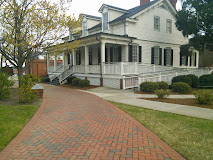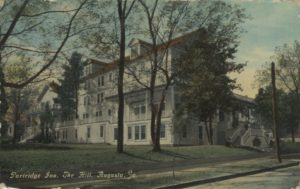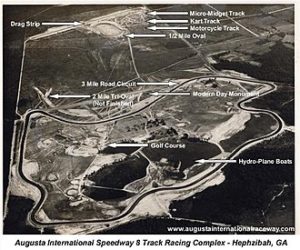Ah the power of a good ghost story. It can thrill us, chill us, and even teach us about local history if we’re lucky.
My father was a master ghost story teller as far as the thrill and chill went. He took the ghost stories he had heard in his North Carolina childhood and adapted them for his Southern Maryland child and her friends by placing them in local historic venues. We worried about seeing the ghostly body forever trapped in its coffin whenever we visited Cornfield Harbor.
Daddy had to improvise. We were short on named ghosts in Southern Maryland. Save Moll Dyer, the ghost of a famous witch – used successfully to get my brother-in-law to stay in the yard and out of the woods- there were no real ghosts to tell the story of our area.
I didn’t experience the power of the ghost story to tell history until I lived in Great Britain. Ghost walks abound. It wasn’t until I experienced the horror of the “Bloody Tower” that I had the combo of a chilling ghost story imbedded in a history lesson about Jewish life in medieval Yorkshire that I truly became a fan of the “historical” ghost story.
By good luck, Augusta has many ghost stories with historical roots. All of them cannot be recounted here. If you want to immerse yourself in ghostly lore, pick up Scott A. Johnson’s The Mayor’s Guide: The Stately Ghosts of Augusta or Sean Joiner’s Haunted Augusta & Local Legends. Both of these are available for checkout or, since they are short reads, perfect for a quiet stay in the Georgia Room.
Heritage Academy occupies the old Houghton school, built by the insistence of John Houghton (d. February 27, 1851) a successful businessman who donated a large sum of money to erect a free school for children to be named for him. When the building was Houghton School, teachers and students say they felt a kindly presence. Houghton made his presence known through shadows and bangs. More scary are students’ stories of being pushed down the stairs with no culprit in sight. Perhaps, Houghton was less than impressed with their school performance.
Augusta boasts two ghosts named Emily. The well documented Emily Galt- who left her initials carved into a window of Augusta University’s Bellevue Hall in 1861- fell in love with a Confederate soldier who never returned. Upon hearing of his demise, Emily threw herself from a second story window to her death. She is rumored to stalk the second floor arguing with her fiancé. For more information on Emily Galt consult Bill Wells, Wells, I. (2013). Poor Emily: A Symbol of Myths and Legends at the Old Augusta Arsenal. Augusta Richmond County History., 44(1). You’ll find that Emily lived a long life instead.
The Partridge Inn’s Emily was a beautiful bride set to marry a Union soldier. On the way to the ceremony he was mistaken for a traitor, shot and killed. Emily haunts the second floor of the Partridge Inn, identifiable by her flowing chestnut hair and Irish lace dress and those who claim to have seen her report they felt a wave of overwhelming sadness come over them. If you wish to see Emily, the Partridge Inn suggests a stay in autumn months.
Modern times can still birth a grizzly ghost story. The Augusta International Speedway hosted NASCAR Grand National Series races from 1962 to 1969. The racecourse was known for the fated Cemetery Curve. The Rosier family cemetery sat close to this curve. While the course itself was considered difficult an astonishing number of crashes took place on this stretch of the track. At the very first race thirty-two cars started with only sixteen finishers. Rumor and whispers blamed the demise of six of the seven top racers at this event on some malevolent force at the track. The track was prepared to take more lives besides those of car racing’s up and coming stars. Skydiver Theresa Morgan perished on the track, despite her main and reserve chutes being correctly deployed. Once closed, the raceway came a magnet for clandestine bicycle races reportedly causing injuries and deaths. Those who walk the course swear they can feel death there, most especially at Cemetery Curve. It appears the long dead Rosiers are determined to keep the peace of their cemetery undisturbed.
Like Emily Galt and John Houghton, Grandison Harris was a living breathing citizen of Augusta. Enslaved by the Medical College of Georgia until the end of the Civil War, the college educated Grandison in reading, writing and anatomy so that he could prepare cadavers for study. One of the results of this work was that Grandison was forced to become a Resurrection man, digging up bodies under cover of darkness to procure them for study at the Medical College.
While most of Augusta’s stories are rightly termed myths, Grandison Harris’ activities were corroborated during a renovation of the Old Medical College building in 1989. Beneath the floor were found hundreds of bones neatly labeled for study and whole bodies in whiskey-filled vats proof enough of Harris’ unusual trade. Thanks to its use, the Old Medical College is rumored to be the most haunted in Augusta.
Each of these stories has truth in some of its details. It was possible in 1851 to amass enough wealth in Augusta to endow a school. A young Emily Galt lived with her family in the quartermaster’s house at Bellevue Hall. Young ladies liked to hold their weddings at the fashionable Partridge Inn. A local race course was the site of many injuries and some deaths. A man worked as a grave-robber for a medical school. Stories starting with facts can grow to become the area’s legends.
Unfortunately, the HQ library can’t offer up any ghost stories of its own even though it sits on the site of the old Hollingsworth Candy Company. Though the building can give off an occasional unexplained bump or groan, this is not a sign of the spectral noises of a long shut down factory. A shame actually. Wouldn’t it be nice to ask the ghosts for the lost recipes of Hollingsworth’s chocolates?



